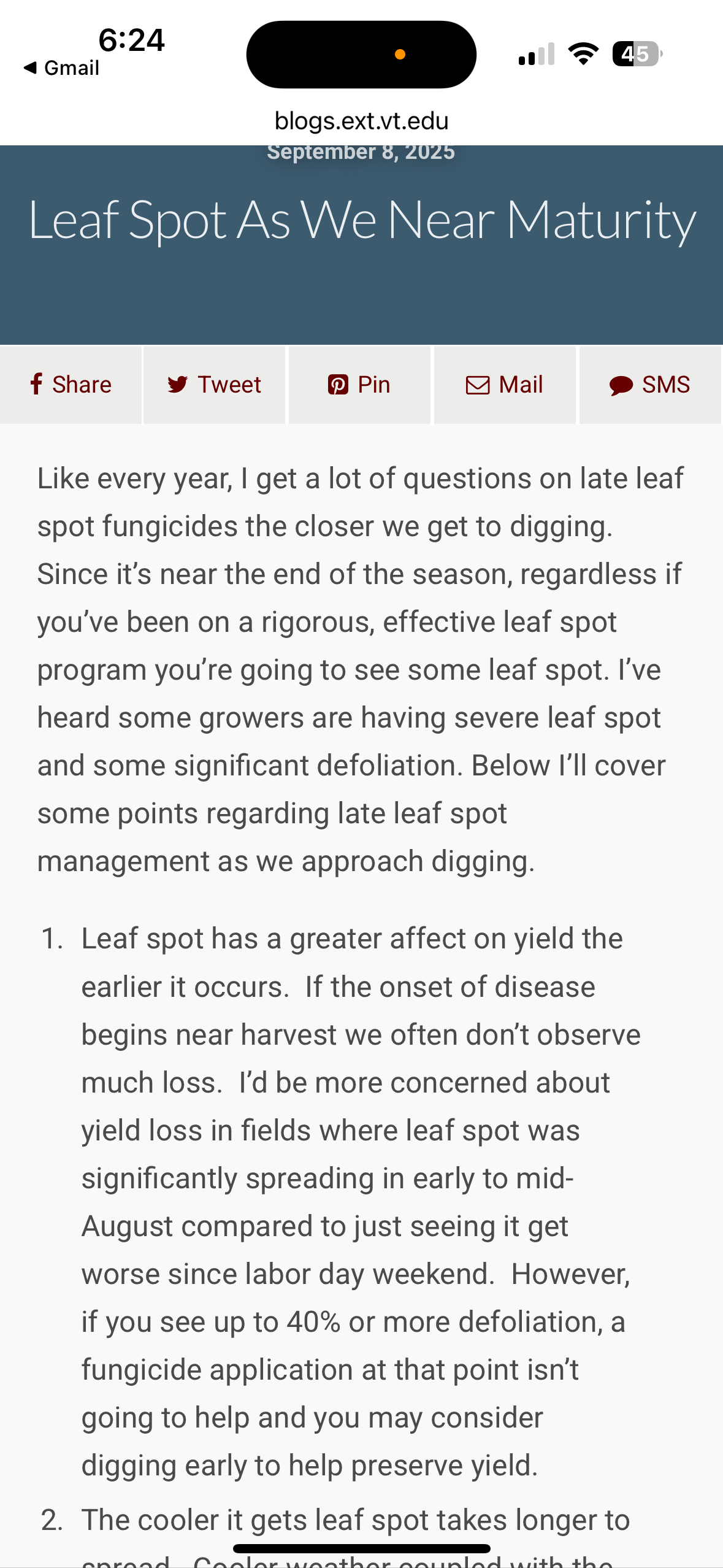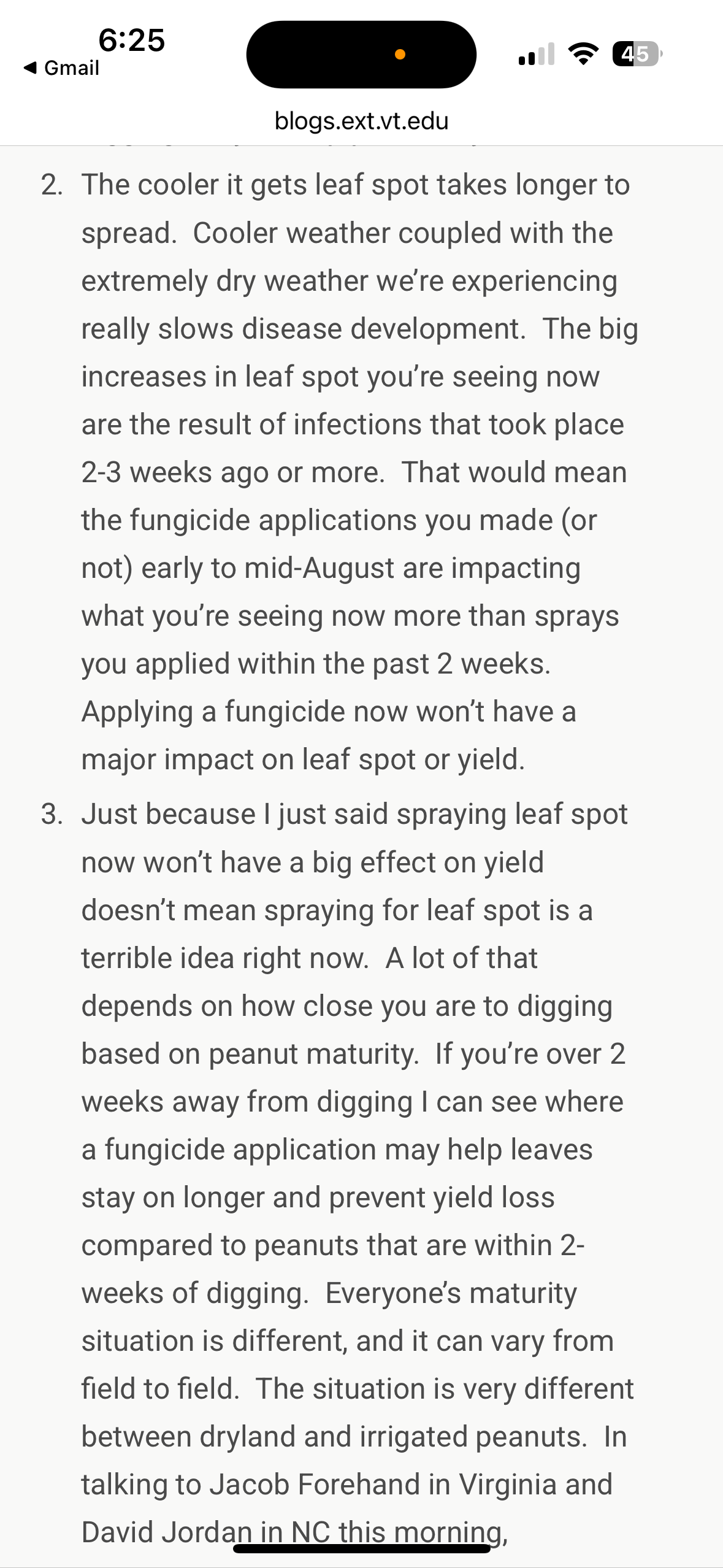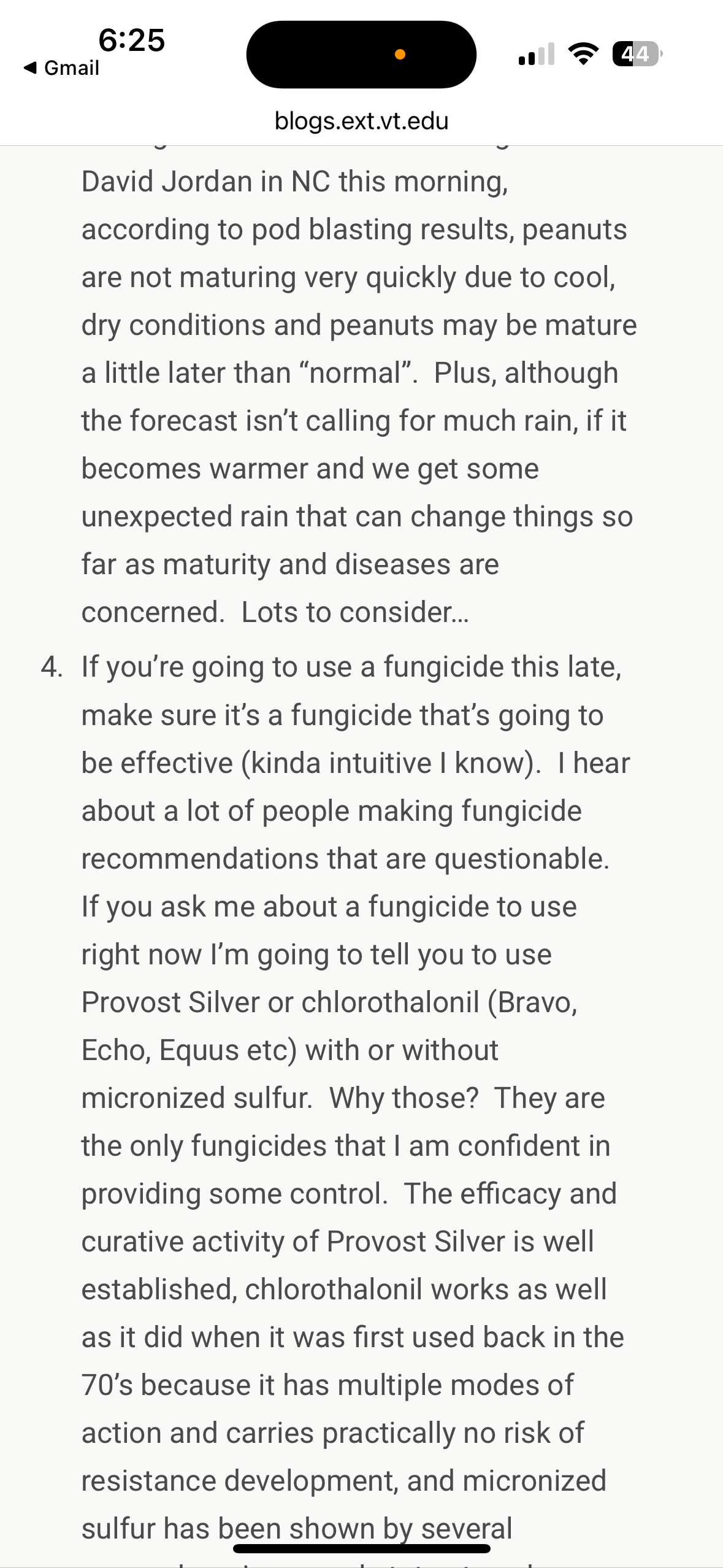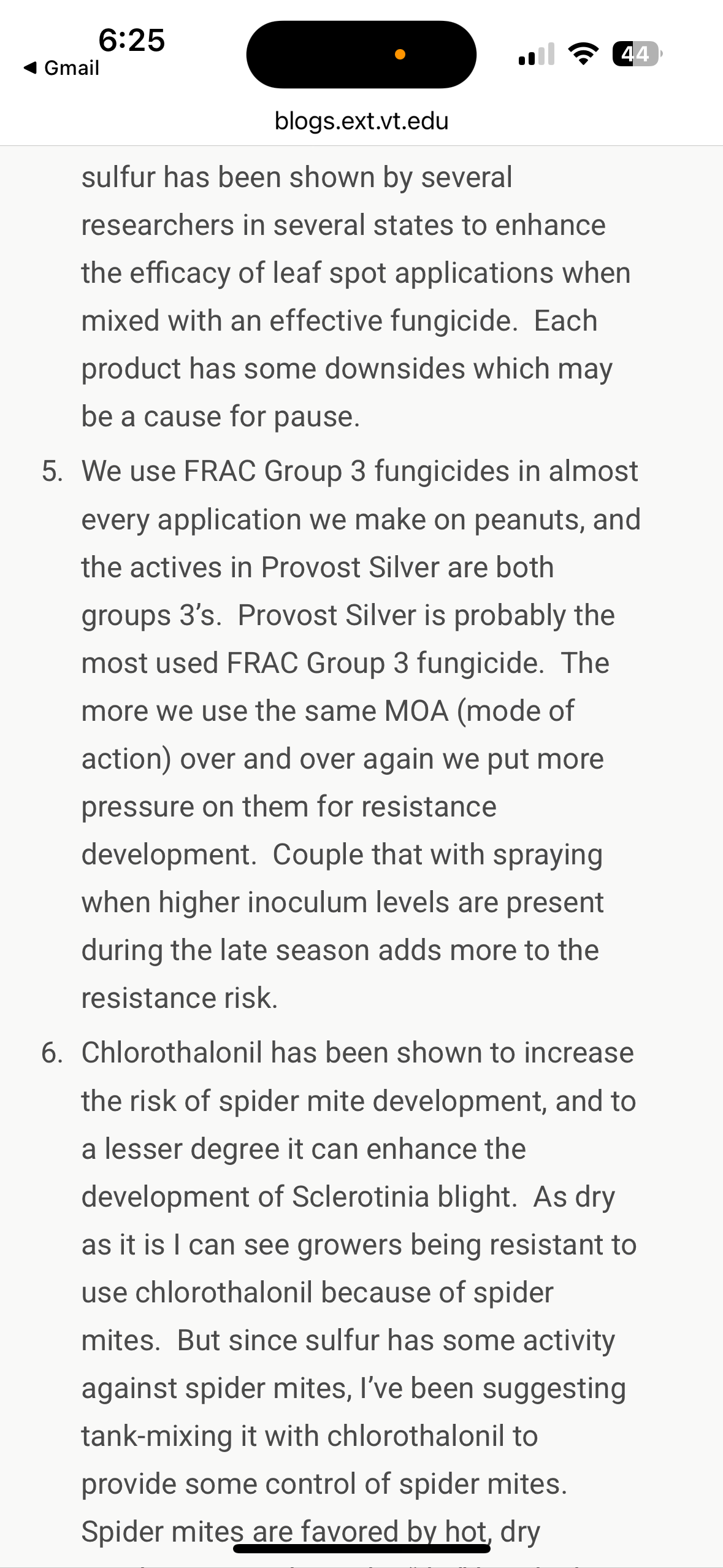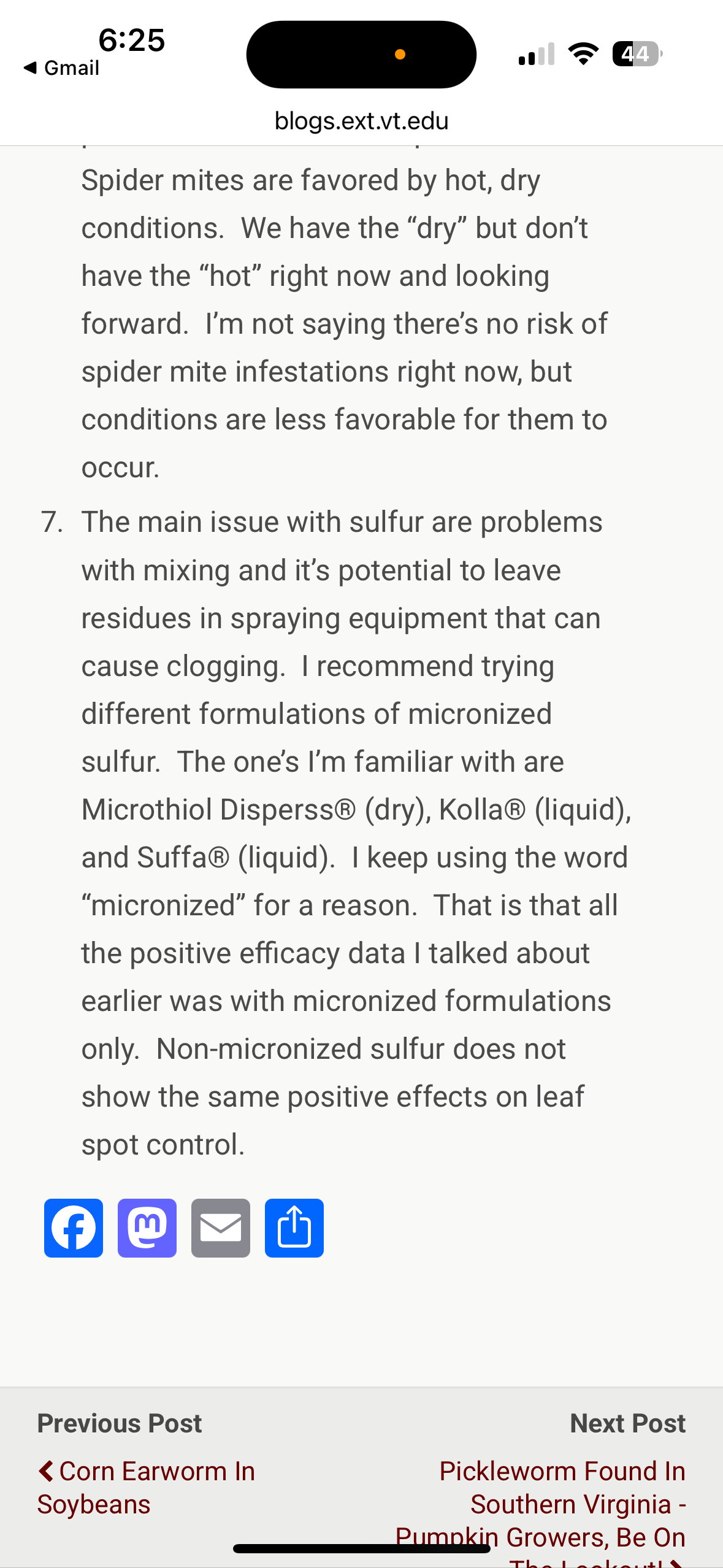VT Information on Disease and Maturity David Langston Peanut Notes No. 247 2025
go.ncsu.edu/readext?1093395
en Español / em Português
El inglés es el idioma de control de esta página. En la medida en que haya algún conflicto entre la traducción al inglés y la traducción, el inglés prevalece.
Al hacer clic en el enlace de traducción se activa un servicio de traducción gratuito para convertir la página al español. Al igual que con cualquier traducción por Internet, la conversión no es sensible al contexto y puede que no traduzca el texto en su significado original. NC State Extension no garantiza la exactitud del texto traducido. Por favor, tenga en cuenta que algunas aplicaciones y/o servicios pueden no funcionar como se espera cuando se traducen.
Português
Inglês é o idioma de controle desta página. Na medida que haja algum conflito entre o texto original em Inglês e a tradução, o Inglês prevalece.
Ao clicar no link de tradução, um serviço gratuito de tradução será ativado para converter a página para o Português. Como em qualquer tradução pela internet, a conversão não é sensivel ao contexto e pode não ocorrer a tradução para o significado orginal. O serviço de Extensão da Carolina do Norte (NC State Extension) não garante a exatidão do texto traduzido. Por favor, observe que algumas funções ou serviços podem não funcionar como esperado após a tradução.
English
English is the controlling language of this page. To the extent there is any conflict between the English text and the translation, English controls.
Clicking on the translation link activates a free translation service to convert the page to Spanish. As with any Internet translation, the conversion is not context-sensitive and may not translate the text to its original meaning. NC State Extension does not guarantee the accuracy of the translated text. Please note that some applications and/or services may not function as expected when translated.
Collapse ▲The following are screenshots from the Virginia Ag Pest and Crop Advisory posted by Dr Langston.
Leaf Spot As We Near Maturity
Like every year, I get a lot of questions on late leaf spot fungicides the closer we get to digging. Since it’s near the end of the season, regardless if you’ve been on a rigorous, effective leaf spot program you’re going to see some leaf spot. I’ve heard some growers are having severe leaf spot and some significant defoliation. Below I’ll cover some points regarding late leaf spot management as we approach digging.
- Leaf spot has a greater affect on yield the earlier it occurs. If the onset of disease begins near harvest we often don’t observe much loss. I’d be more concerned about yield loss in fields where leaf spot was significantly spreading in early to mid-August compared to just seeing it get worse since labor day weekend. However, if you see up to 40% or more defoliation, a fungicide application at that point isn’t going to help and you may consider digging early to help preserve yield.
- The cooler it gets leaf spot takes longer to spread. Cooler weather coupled with the extremely dry weather we’re experiencing really slows disease development. The big increases in leaf spot you’re seeing now are the result of infections that took place 2-3 weeks ago or more. That would mean the fungicide applications you made (or not) early to mid-August are impacting what you’re seeing now more than sprays you applied within the past 2 weeks. Applying a fungicide now won’t have a major impact on leaf spot or yield.
- Just because I just said spraying leaf spot now won’t have a big effect on yield doesn’t mean spraying is a terrible idea. A lot of that depends on how close you are to digging based on peanut maturity. If you’re over 2 weeks away from digging I can see where a fungicide application may help leaves stay on longer and prevent yield loss compared to peanuts that are within 2-weeks of digging. Everyone’s maturity situation is different, and it can vary from field to field. The situation is very different between dryland and irrigated peanuts. In talking to Jacob Forehand in Virginia and David Jordan in NC this morning, according to pod blasting results, peanuts are not maturing very quickly due to cool, dry conditions and peanuts may be mature a little later than “normal”. Plus, although the forecast isn’t calling for much rain, if it becomes warmer and we get some unexpected rain that can change things so far as maturity and diseases are concerned. Lots to consider…
- If you’re going to use a fungicide this late, make sure it’s effective. I hear about a lot of people making fungicide recommendations that are questionable. If you ask me about a fungicide to use right now I’m going to tell you to use Provost Silver or chlorothalonil (Bravo, Echo, Equus etc) with or without micronized sulfur. Why those? They are the only fungicides that I am confident in providing some control. The efficacy and curative activity of Provost Silver is well established, chlorothalonil works as well as it did when it was first used back in the 70’s because it has multiple modes of action and carries practically no risk of resistance development, and micronized sulfur has been shown by several researchers in several states to enhance the efficacy of leaf spot applications when mixed with an effective fungicide. Each product has some downsides which may be a cause for pause.
- We use FRAC Group 3 fungicides in almost every application on peanuts. The actives in Provost Silver are both Group 3’s. Provost Silver is probably the most used FRAC Group 3 fungicide. The more we use the same MOA (mode of action) over and over again, we put more pressure on them for resistance development. Couple that with spraying when higher inoculum levels are present during the late season adds more to the resistance risk.
- Chlorothalonil has been shown to increase the risk of spider mite development, and to a lesser degree it can enhance the development of Sclerotinia blight. As dry as it is I can see growers being resistant to use chlorothalonil because of spider mites. But since sulfur has some activity against spider mites, I’ve been suggesting tank-mixing it with chlorothalonil to provide some control of spider mites. Spider mites are favored by hot, dry conditions. We have the “dry” but don’t have the “hot” right now and looking forward. I’m not saying there’s no risk of spider mite infestations right now, but conditions are less favorable for them to occur.
- The main issue with sulfur is mixing and residue buildup. It has the potential to leave residues in spraying equipment that can cause clogging. I recommend trying different formulations of micronized sulfur. The ones I’m familiar with are Microthiol Disperss® (dry), Kolla® (liquid), and Suffa® (liquid). I keep using the word “micronized” for a reason. That is that all the positive efficacy data I talked about earlier was with micronized formulations only. Non-micronized sulfur does not show the same positive effects on leaf spot control.



